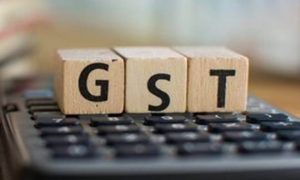NEW DELHI : The government’s direct tax collections have exceeded the revised estimates for FY22 by ₹1.13 trillion, thanks to robust advance tax mop-up in the last quarter, data released on Thursday showed. This will provide the government flexibility as the Russia-Ukraine conflict and soaring energy prices threaten to upset its spending math.
Direct tax collections, comprising corporation tax and personal income tax and net of refunds, touched ₹13.63 trillion as of 16 March, 9% higher than the FY22 revised estimate of ₹12.5 trillion announced last month, the Central Board of Direct Taxes (CBDT) said. After the Q4 advance tax payments, direct tax collections are 48% more than the year earlier.
Read More:-Wealth Guide: Income Tax – These insurance policies can help in saving taxes
Mumbai recorded the highest collections at ₹4.5 trillion, a growth of 48% over last year. Bengaluru, Delhi and Chennai posted growth in direct tax mop-up by 44%, 38.1% and 48%, respectively.
Advance tax is paid as and when the money is earned in four instalments, rather than at the end of the fiscal. Gross direct tax collections (before refunds) stood at ₹15.5 trillion, up 38% compared to ₹11.2 trillion in the corresponding period of 2020-21. Refunds fell 7.42% from last year at ₹1.87 trillion.
“The better-than-expected tax collections can be attributed to the revival in corporate earnings. They have been hiring. There is an improvement in economic outlook post-covid. Collections exceeding the revised estimates are in line with expectations as some room was kept to account for contingencies,” a government official said, seeking anonymity.
The first instalment, or 15% of advance tax, is to be paid by 15 June, the second by 15 September (30%), the third by 15 December (30%) and the rest by 15 March. For the first time in four years, direct tax collection exceeded the revised budget target in 2020-21, touching ₹9.44 trillion, compared with the revised estimate of ₹9.05 trillion.
Read More:-Over 6.6 crore income tax returns filed on new portal
Experts said economic recovery and job market resurgence have boosted tax collections.
Rakesh Nangia, chairman of Nangia Anderson India, said recovery across sectors and revival of the job market have perked up the government’s revenue collections. “Aided by the revival of economic activities and better compliance, advance direct tax collections have surpassed targets. Healthy expansion in advance tax collection reinforces our view that the recovery is K-shaped, with the formal sectors gaining market share,” he added.
The government moved a supplementary demand for grants in Parliament last week to spend an additional ₹1.07 trillion in the current fiscal. It includes a ₹15,000 crore outlay for fertilizer subsidy in the wake of rising global fertilizer prices due to the Russia-Ukraine war. Hence, the better-than-expected mop-up will cushion fiscal deficit, estimated at 6.9% of GDP, especially as disinvestment proceeds from LIC will also not come in with the IPO pushed to FY23.
Corporation tax collections at ₹7.19 trillion have exceeded the revised estimates by 13.2% to ₹85,000 crore. The corporation tax mop-up is 50% higher than a year earlier. Personal income tax collection at ₹6.17 trillion is ₹2,000 crore higher than the revised estimate, with a 46.5% growth over the same period of 2020-21.
Government officials also attributed the robust tax collections to increased enforcement due to the sharing of goods and services tax data with the CBDT and better compliance.





































